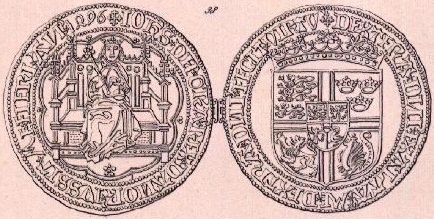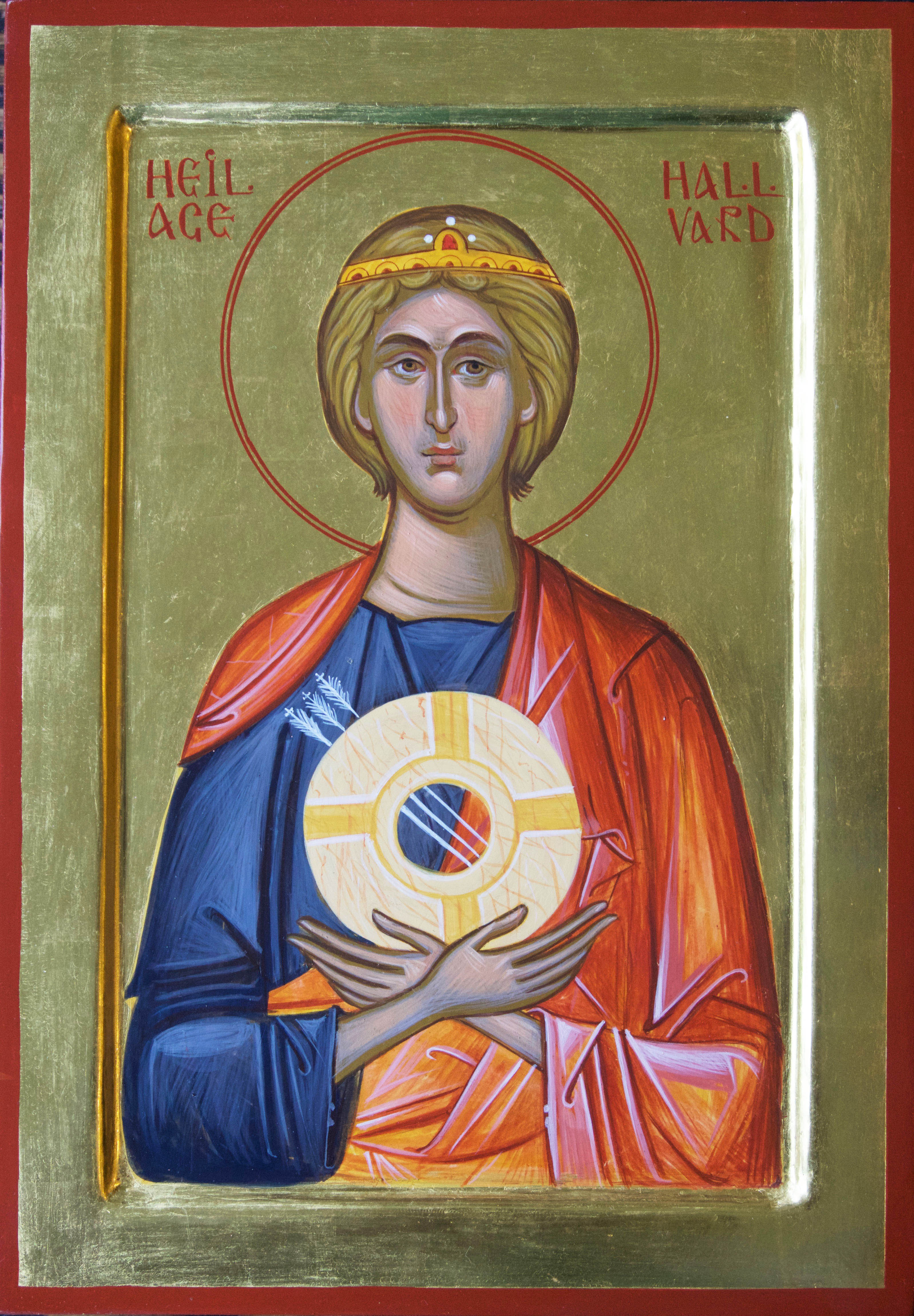|
Tordenstjerne (noble Family)
The Tordenstjerne family, also spelled ''Tordenstierne'', was a Norwegian nobility, Norwegian noble family. History Nils Sveinsson was on 20 July 1505 ennobled by John, King of Denmark under the name ''Tordenstjerne'' (lit. ''Thunder Star'') for his braveness in the capture of Vänersborg in Sweden. He achieved as well the title squire (Norwegian: ''væpner''). It is said that he first was married to the Swedish noblewoman Eline Henriksdotter Måneskjold av Rise, but that the marriage was childless. Thereafter he married Ingeborg Torsteinsdotter, who was the daughter of Torstein Asseresson on the farm Saue of Frogner parish in Lier, Norway, Lier. The resided on the Gullaug farm in Lier. Their children were Kristoffer Nilsson Tordenstjerne til Solum, Laurits Nilsson Tordenstjerne til Steinshorn, and Jon Nilsson Tordenstjerne til Gullaug. Jon Nilsson Tordenstjerne til Gullaug († allegedly in 1592) was followed by his son, Audun Jonsson Tordenstjerne til Gullaug. In 1626, his ... [...More Info...] [...Related Items...] OR: [Wikipedia] [Google] [Baidu] |
Norwegian Nobility
Aristocracy of Norway refers to Modern history, modern and Medieval Ages, medieval Aristocracy (class), aristocracy in Norway. Additionally, there have been economical, political, and military elites thatrelating to the main lines of History of Norway, Norway's historyare generally accepted as nominal predecessors of the aforementioned. Since the 16th century, modern aristocracy is known as nobility ( no, adel). The very first aristocracy in today's Norway appeared during the Bronze Age (1800 BC500 BC). This bronze aristocracy consisted of several regional elites, whose earliest known existence dates to 1500 BC. Via similar structures in the Iron Age (400 BC793 AD), these entities would reappear as Petty kingdoms of Norway, petty kingdoms before and during the Viking Age, Age of Vikings (7931066). Beside a chieftain or petty king, each kingdom had its own aristocracy. Between 872 and 1050, during the so-called Unification of Norway, unification process, the first national aristoc ... [...More Info...] [...Related Items...] OR: [Wikipedia] [Google] [Baidu] |
John, King Of Denmark
John (Danish, Norwegian and sv, Hans; né ''Johannes'') (2 February 1455 – 20 February 1513) was a Scandinavian monarch under the Kalmar Union. He was king of Denmark (1481–1513), Norway (1483–1513) and as John II ( sv, Johan II) Sweden (1497–1501). From 1482 to 1513, he was concurrently duke of Schleswig and Holstein in joint rule with his brother Frederick. The three most important political goals of King John were the restoration of the Kalmar Union, reduction of the dominance of the Hanseatic League, and the building of a strong Danish royal power. Biography Early life John was born at Aalborghus Castle, in the city of Aalborg in Northern Jutland. He was the third but eldest surviving son of Christian I of Denmark and Dorothea of Brandenburg, daughter of Margrave John of Brandenburg. In 1478, he married Christina of Saxony, granddaughter of Frederick the Gentle of Saxony. This produced the following offspring: Christian II, Francis, Knud, and Elisabeth, who l ... [...More Info...] [...Related Items...] OR: [Wikipedia] [Google] [Baidu] |
Vänersborg
Vänersborg () is a locality and the seat of Vänersborg Municipality, Västra Götaland County, Sweden with 23,882 inhabitants (out of a municipal total of 39,591) Until 1997 it was the capital of Älvsborg County, which was dissolved in 1998. Since 1999 Vänersborg has been the seat of the regional parliament of Västra Götaland County. The city is located on the southern shores of lake Vänern, close to where the river Göta älv leaves the lake. History A marketplace was established at Brätte at the southern end of Vassbotten (southernmost part of Vänern), south of modern Vänersborg, by the end of the medieval period. The settlement developed with paved streets lined with houses and farms and it was granted town privileges in 1580. The site, however, became unsuitable for trans-shipment of goods due to silting of its harbour and it was difficult to protect. Consequently, in 1644, the town was moved 3½ kilometres north to Huvudnäset, and the new town of Vänersborg was es ... [...More Info...] [...Related Items...] OR: [Wikipedia] [Google] [Baidu] |
Squire
In the Middle Ages, a squire was the shield- or armour-bearer of a knight. Use of the term evolved over time. Initially, a squire served as a knight's apprentice. Later, a village leader or a lord of the manor might come to be known as a "squire", and still later, the term was applied to members of the landed gentry. In contemporary American usage, "squire" is the title given to justices of the peace or similar local dignitaries. ''Squire'' is a shortened version of the word ''esquire'', from the Old French (modern French ), itself derived from the Late Latin ("shield bearer"), in medieval or Old English a ''scutifer''. The Classical Latin equivalent was ("arms bearer"). Knights in training The most common definition of ''squire'' refers to the Middle Ages. A squire was typically a young boy, training to become a knight. A boy became a page at the age of 7 then a squire at age 14. Squires were the second step to becoming a knight, after having served as a page. Boys s ... [...More Info...] [...Related Items...] OR: [Wikipedia] [Google] [Baidu] |
Lier, Norway
Lier is a municipality in Viken county, Norway. The administrative centre of the municipality is the village of Lierbyen. The municipality of Lier was established on 1 January 1838 (see formannskapsdistrikt). The area Åssiden was transferred from Lier to the neighboring municipality of Drammen on 1 July 1951. Norway's longest indoor shopping center, Liertoppen, is located in Lierskogen. The newspaper ''Lierposten'' is published in Lier. General information Name The Old Norse form of the name was ''Líðir''. The name is the plural form of ''líð'' which means "hillside". Coat of arms The coat of arms and was designed by Hallvard Trætteberg and granted on 14 August 1970. The arms show five silver-colored apple blossoms on a red background. The area is well known for the production of various types of fruit, berries, vegetables, and flowers, so this was chosen as a symbol of the area's lush scenery and agriculture. Geography Lier borders to the municipalities of Asker, ... [...More Info...] [...Related Items...] OR: [Wikipedia] [Google] [Baidu] |
Gullaug
Gullaug is an unincorporated village at Lier municipality in Buskerud, Norway. Gullaug is located between Lierbyen, Røyken and Drammen. Geographically, Gullaug is an area that encompasses little more than a small commercial area and local shops, but locals apply the label to the entire area stretching from Lierkroa in the north, Lahell in the south, Amtmandsvingen in the east and Spikkestad in the west. This is the area that is served by the Gullaug school. Gullaug Church (''Gullaug kirke'') in Frogner parish dates from 1905 and was constructed of wood. It has seating for 100 people. Gullaug holdeplass was a railroad stop on the Drammen Line. It opened in 1956 and closed in 1973 when Lieråsen Tunnel opened and the rail line was shortened. The old railway line in the area have been converted into cycle path and located in a popular hiking area. Most of the buildings at Gullaug were built in connection with the former Norwegian industrial group, Norsk Sprængstofindustris wh ... [...More Info...] [...Related Items...] OR: [Wikipedia] [Google] [Baidu] |
Christian VI Of Denmark
Christian VI (30 November 1699 – 6 August 1746) was King of Denmark and Norway from 1730 to 1746. The eldest surviving son of Frederick IV and Louise of Mecklenburg-Güstrow, he is considered one of Denmark-Norway's more anonymous kings, but he was a skilled politician, best known for his authoritarian regime. He was the first king of the Oldenburg dynasty to refrain from entering in any war. During his reign both compulsory confirmation (1736) and a public, nationwide school system (1739) were introduced. His chosen motto was "''Deo et populo''" (for God and the people). Early years Christian was born on 30 November 1699 at Copenhagen Castle as the second but eldest surviving son of King Frederick IV of Denmark by his first consort, Louise of Mecklenburg-Güstrow. His grandfather King Christian V had died just three months, before he was born, and he was thus crown prince from birth. From 1706, Christian came to understand Danish but used German for everyday speaking a ... [...More Info...] [...Related Items...] OR: [Wikipedia] [Google] [Baidu] |
Copenhagen
Copenhagen ( or .; da, København ) is the capital and most populous city of Denmark, with a proper population of around 815.000 in the last quarter of 2022; and some 1.370,000 in the urban area; and the wider Copenhagen metropolitan area has 2,057,142 people. Copenhagen is on the islands of Zealand and Amager, separated from Malmö, Sweden, by the Øresund strait. The Øresund Bridge connects the two cities by rail and road. Originally a Viking fishing village established in the 10th century in the vicinity of what is now Gammel Strand, Copenhagen became the capital of Denmark in the early 15th century. Beginning in the 17th century, it consolidated its position as a regional centre of power with its institutions, defences, and armed forces. During the Renaissance the city served as the de facto capital of the Kalmar Union, being the seat of monarchy, governing the majority of the present day Nordic region in a personal union with Sweden and Norway ruled by the Danis ... [...More Info...] [...Related Items...] OR: [Wikipedia] [Google] [Baidu] |
Paris
Paris () is the capital and most populous city of France, with an estimated population of 2,165,423 residents in 2019 in an area of more than 105 km² (41 sq mi), making it the 30th most densely populated city in the world in 2020. Since the 17th century, Paris has been one of the world's major centres of finance, diplomacy, commerce, fashion, gastronomy, and science. For its leading role in the arts and sciences, as well as its very early system of street lighting, in the 19th century it became known as "the City of Light". Like London, prior to the Second World War, it was also sometimes called the capital of the world. The City of Paris is the centre of the Île-de-France region, or Paris Region, with an estimated population of 12,262,544 in 2019, or about 19% of the population of France, making the region France's primate city. The Paris Region had a GDP of €739 billion ($743 billion) in 2019, which is the highest in Europe. According to the Economist Intelli ... [...More Info...] [...Related Items...] OR: [Wikipedia] [Google] [Baidu] |
Seat Farm
In Scandinavia, a seat farm (Danish: ''sædegård''; Norwegian: ''setegård''/''setegard''; Swedish: ''sätesgård'' or ''säteri''; Finnish: ''säteriratsutila'') was a farm where a nobleman had his permanent residence. They were found in the Kingdom of Denmark, the Kingdom of Norway, the Kingdom of Sweden, and Finland, and enjoyed certain privileges. Norway The term was originally used for any farm where a nobleman chose to reside. In 1639 the status of seat farm was restricted to farms that for at least the previous forty years had enjoyed this status. After 1660, when absolute monarchy was introduced in Norway, non-noble persons could also achieve this status for their farm of residence. Seat farms had, especially, freedom from taxes and tithes. After 1800 the tax exemption was modified, and under the 1821 Nobility Law the exemption ended upon the death of the person owning the farm at the time of the law's enactment. * Approximate number of seat farms in 1639: 100 * App ... [...More Info...] [...Related Items...] OR: [Wikipedia] [Google] [Baidu] |
.jpg)






